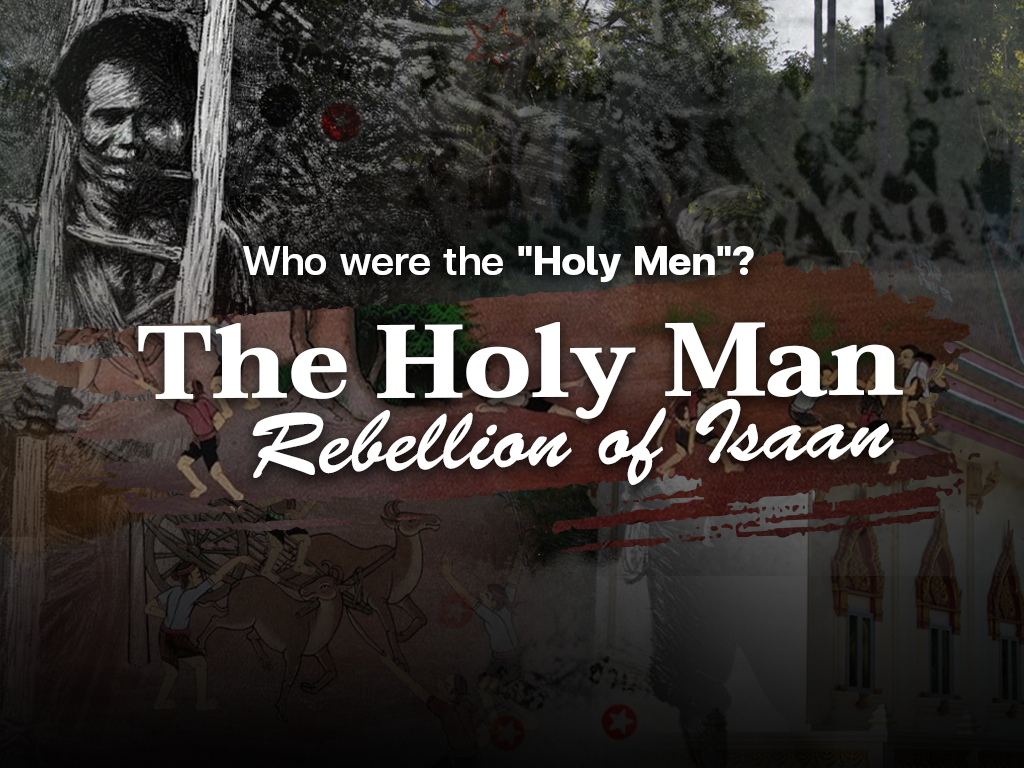
In response to popular demand (on the Thai-language side), we are bringing our readers a new set of items on the Holy Man Rebellion, part of an effort to rediscover Isaan’s lost history. This time we explore the causes behind the uprising of Isaan people 121 years ago. Although the lives of 300 rebels were lost in Ban Saphue, Ubon Ratchathani, there’s no memorial, no museum, no sign that the community has once seen so many die all at once. The Isaan Record presents the Season 2 of “The Isaan Holy Man Rebellion” to commemorate the 121st anniversary of the brutal crackdown.
In May last year, The Isaan Record’s editorial team produced a number of videos, features, and news articles about the movement of Isaan citizens who rebelled against the Siamese government in 1901-1902. The series was entitled “Phi Bun of Isaan,” or “Holy Man of Isaan.”
The series featured over 30 stories about the tragic political struggle, but there are still many more issues to be discovered. The event took place over 120 years ago, and all eyewitnesses have passed away. All that’s left are tales and anecdotes that have been passed on through generations of the residents of Ban Saphue, Ubon Ratchathani, where the bloodiest battle of the rebellion occurred.
The reason we’re publishing these stories is not to stir up past quarrels or provoke further discord in Thai society, nor is it to incite some motion of separatism. It is only to put some light on Isaan’s lost history, for the public to learn, reminisce, and remember.
Following the publications of the first series was a lively, extensive online debate in the comment section on The Isaan Record’s Facebook page, especially about the root causes that drove these people to rise up. The primary cause of the rebellion, most accounts say, was the unfair tax collection and injustice that Isaan people suffered at the hands of the Siamese government.
After publishing the first series, THe Isaan Record organized an online forum on the social app “Clubhouse” on the killing field at Ban Saphue, where hundreds of the Holy Man rebels were killed. It quickly attracted the attention of both the mainstream media and internet users, leading to discussions about Thailand’s local history across several platforms.
Shortly after, The Isaan Record held another online panel discussion, also on Clubhouse, with historians from three different regions — the north, the northeast, and the deep south. The exchanges about the history of rural rebellions from the three regions also gained substantial attention.
What we learned from the discussion of the three local historians was that people residing in these regions considered themselves as being outside of Siam. The formation of the modern state during the reign of King Rama V unified the government into a unitary state, a process that took autonomy away from former “colonies” and “dependencies.”
It was a predicament for various groups of people who were suddenly forced into becoming subjects of Siam and its own colonial project. The drive to establish cultural, linguistic, and economic domination aimed to erase all vestiges identity and even and origins and, even, histories. Identities were degraded, swallowed up, or destroyed in the name of a “harmonized and unified” Siam, although each communities’ diverse characteristics had possessed a beauty of their own.
To unveil more of Isaan’s history that has never featured in school textbooks, The Isaan Record decided to revisit this series for the second time to honor the 300 souls who perished on this plateau then.
The eyewitnesses to the event are all gone now. Even most of those who heard the firsthand accounts of the event are themselves gone. How did this particular community become the site of such carnage, essentially a massacre? How did this community become a gravesite for 300 souls who never received a proper burial?
The answer awaits in Season 2 of the series, “The Isaan Holy Man Rebellion, Season 2.”
Read Thai version ผู้มีบุญในอีสานซีซั่นสอง (1) – หัวอกคนอยู่ในอาณานิคมภายในของรัฐสยาม




